Tiger Tank 1 replica
This German WW2 Tiger Tank Mk1 replica now belongs to the Swedish Global War Museum and is often seen at military vehicle events, re-enactments and appears in TV and films. The upper hull was built on top of a cold war Soviet T-55 1962 tank chassis. It was built in Germany in 2001 and sold to the Swedish Museum in 2009. www.globalwarmuseum.com
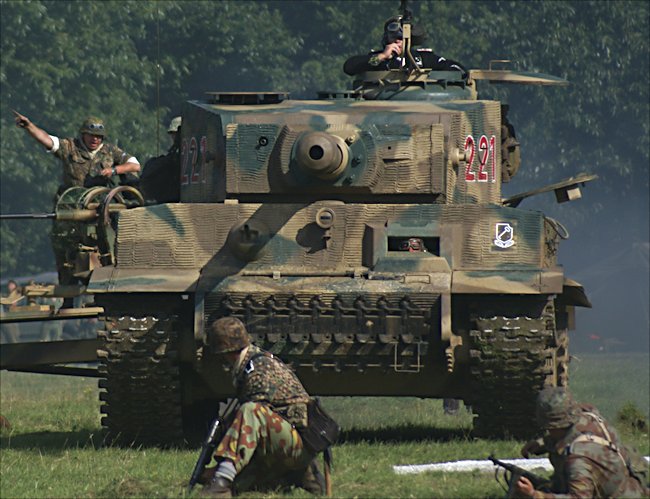
Panzerkampfwagen Ausführung VI – Tiger Tank replica built on a cold war Russian T55 tank chassis
Tiger I tanks fought in the Battle of the Bulge
On 16th December 1944 in the Belgium and Luxembourg Ardennes over 1700 German tanks and 200,000 infantry attack American forces along a 100km front in the cold snowy weather of winter. The ‘Battle of the Bulge’ has just begun.
Spearheading the attack is the newly formed 6th Panzer Army. The German aim is to punch through the tingly defended American line with 60,000 infantry and two panzer divisions. They would drive west, take and hold two bridges over the Meuse River: one at Liege and another to the south west at Huy.
A third Panzer division would then drive north-west to capture the port city of Antwerp driving a wedge between the British and American forces. They must take them by surprise using heavy armour and in poor weather conditions so that the Allies cannot use their air superiority.
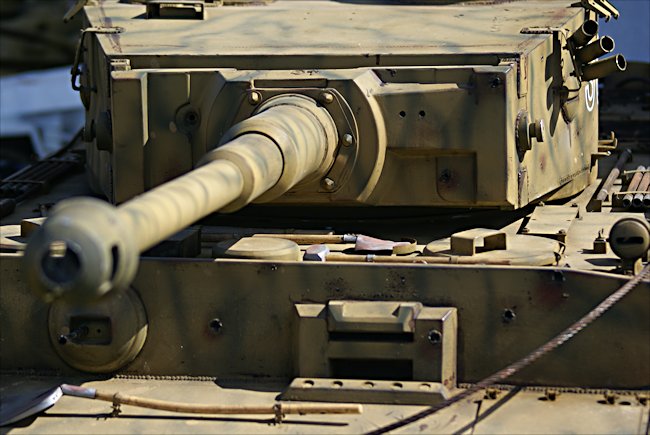
German WW2 Tiger Tank Mk1 replica
The 6th Panzer Army is the best equipped force in the Ardennes. It has over 100 Tiger I tanks in its ranks. This is forgotten in many accounts of the battle which tend to focus on the arrival of the King Tiger tank on the 1944 battlefield and the very good Panther tank.
The Panzer VI Tiger I tank has 100mm of frontal armour protection which the75mm guns fitted to most American M4 Sherman tanks cannot penetrate. Its 88mm main cannon can penetrate the thin 50mm of frontal armour fitted to most Sherman tanks. The Tiger I was a tank to be feared. The only way for a Sherman tank crew to knockout a Tiger I was to get in very close and fire at its, track, side or rear. This was very difficult to achieve because long range of the 88mm gun. Most Shermans would be knocked out before they got close enough to be a threat.
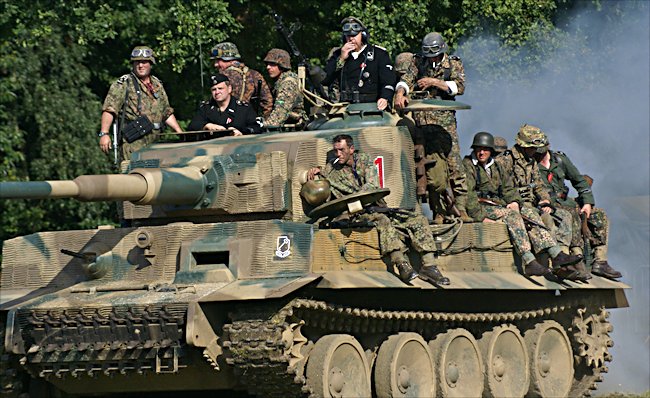
This Tiger Tank Mk1 replica has been finished with authentic looking Zimmerit-Schutzbelag anti-magnetic mine covering that was used on German Panzer tanks on the Western and Eastern fronts.
German Captain Erwin Kressmann, 519th Heavy Tank Destroyer Battalion remembers. "With the enormous penetrating power of the 88mm gun we were able to effectively fight the more numerous American tanks. Some of them we destroyed completely with one shot."
German tank crew member Private first class Georg Mussbach, 116th Panzer Division, said about the start of the attack, "It started in one fell swoop and we chased away the Americans. They dropped everything. ‘The bad Germans are coming lets run’ that is kind of what it looked like."
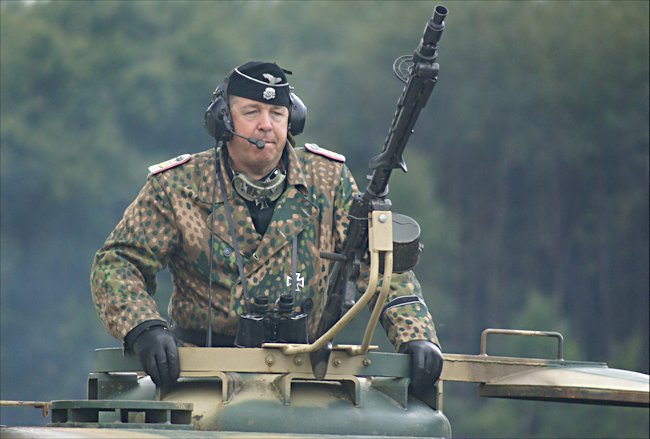
The German WW2 Tiger Tank Mk1 replica owner.
Desperate US Commanders order all available forces to the front. American GI Private first class Thomas MacDonnell 438th AAA AW Battalion recalls "Primarliy, and during the Battle of the Bulge, they would move us up to where ever there was a hole to fill. We were in M16 half-tracks with only 50 calibre machine-guns. We were anti-aircraft and anti-personnel. Our job was to protect the tanks."
"We were moving down a fire lane in a forest. The two Shermans we were with were on our left about 50 yards away. Coming over the horizon and towards the Shermans was a Tiger tank. A big Tiger tank. He just knocked the trees down as he went. He came right on through. Those Shermans fired. I counted seven rounds bounce off the front of the Tiger. It did not bother him, just like flees on a dog. He shook them off and kept coming. He then turned that turret ever so slowly and fired. Out went one of those Shermans. He then turned a little more, fired and knocked out the second Sherman. We got out of there as fast as we could."
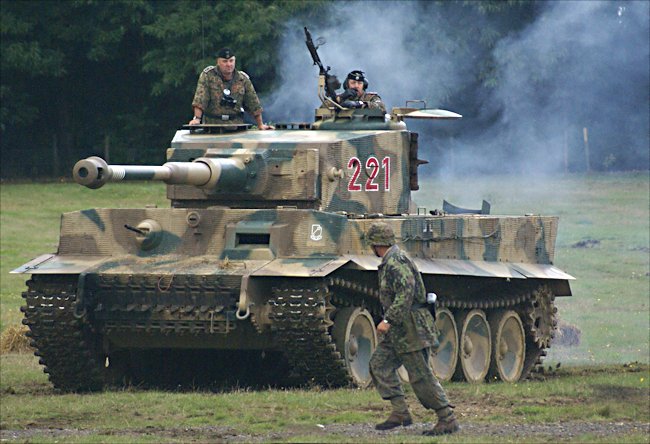
Panzer VI Tiger Tank Mk1 replica. Notice the wrong type of wheels.
Tiger I tanks assault Stavelot Bridge Dec 1944
During the Battle of the Bulge on 16th December 1944 the German 6th Panzer Army attacked an American weak point in the Belgium Ardennes with the aim of driving a wedge between the British and Americans and capture the port of Antwerp.
But first they had to take the bridge over the Ambleve River at Stavelot. Defending the town were 250 American GIs and few anti-tank guns from the 825th Tank Destroyer Battalion. Sergeant Lou Celentano was one of those gun crews.
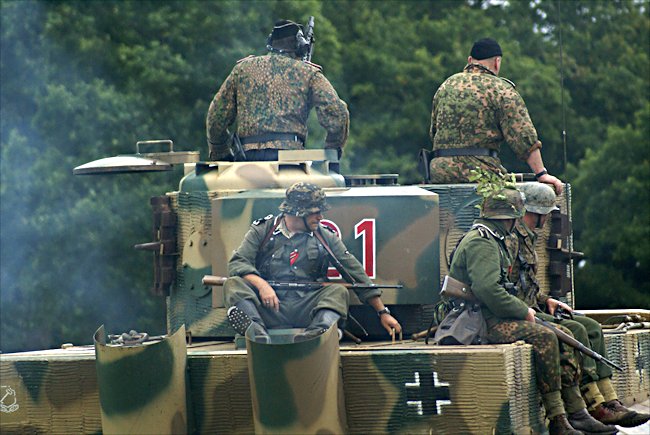
German WW2 Tiger Tank Mk1 replica's rear exhaust covers.
"We had driven through the night to Stavelot, towing our gun behind our halftrack. It began to get light and you could hear clanking, which was a sign that there were tanks nearby. When they finally did appear on the hill in front of us, it looked like Tigers to me. As they came down the hill they were between buildings. To get a good shot at them we had to destroy buildings first. A job that our guns could do quite easily. We took bead on the houses first. Now there were four tigers within our sights showing their sides as they went downhill. "
The Americans were equipped with a 3 inch 76.2mm M5 Anti-tank gun which could penetrate 90mm of armour at 900 yards. It could not deal with a Tiger tank coming towards it but had a chance of penetrating the enemy tank’s armour if they could get a direct hit on the tanks tracks, side or rear.
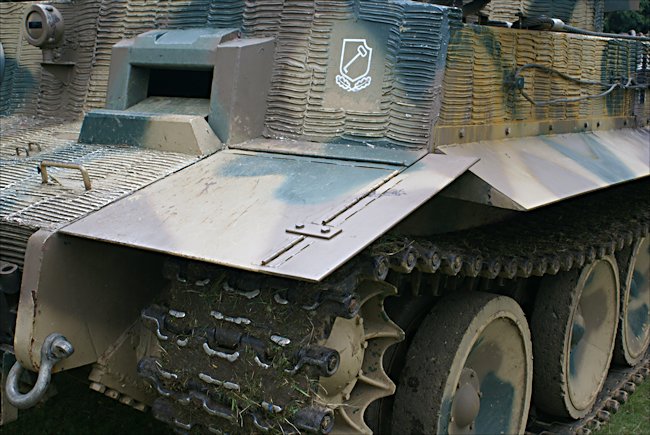
The Tiger Tank Mk1 replica's driver's position
Sergeant Lou Celentano continued, "Part of our luck was that the roads going downhill were extremely slippery. The Tigers were sliding from side to side on the ice and were not paying the right amount of attention to us as they would have done in dry weather. Of course I was worried about the distance. I remember giving the order 900 yards. That really sticks out in my mind that 900 yards. As we were taught we cross fired. We fired on the first tank and Sergeant Howser’s gun fired on the last tank. As luck would have it we hit the first and last tanks immediately. I said 900 yards and I think I hit it right on the nose. To hit them first time like we did was 50% luck, because we hit them hard."
"We hit the tracks on both of those tanks. That was pure unadulterated luck. Once his track is broken now you have to go for his turret, because he still can move that turret. They were disabled on two ends. The guys in the middle could not move. They could not move forward or move backwards and we kept firing at their sides and turrets. Everything fell into place. That training really paid off."
The anti-tank gunners of the American 825th Tank Destroyer Battalion at Stavelot bridge knock out four Panzer Mark IV Tiger I tanks and slow the German advance.
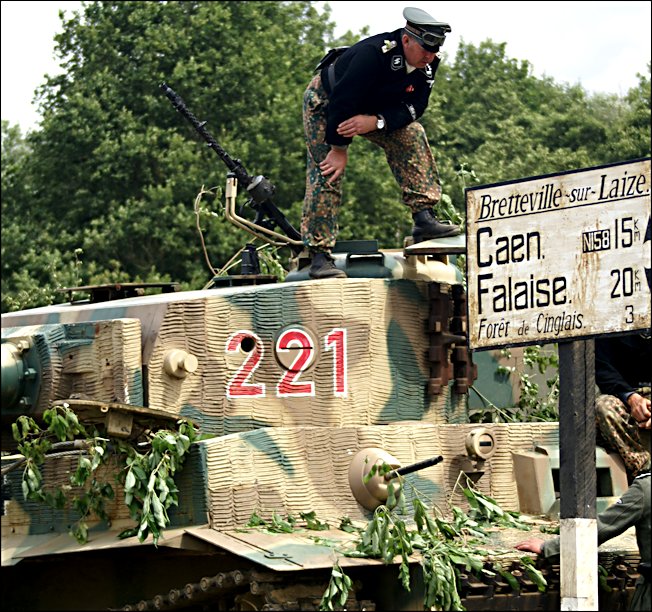
Panzer Mark VI Tiger tank replica
WW2 tank books

